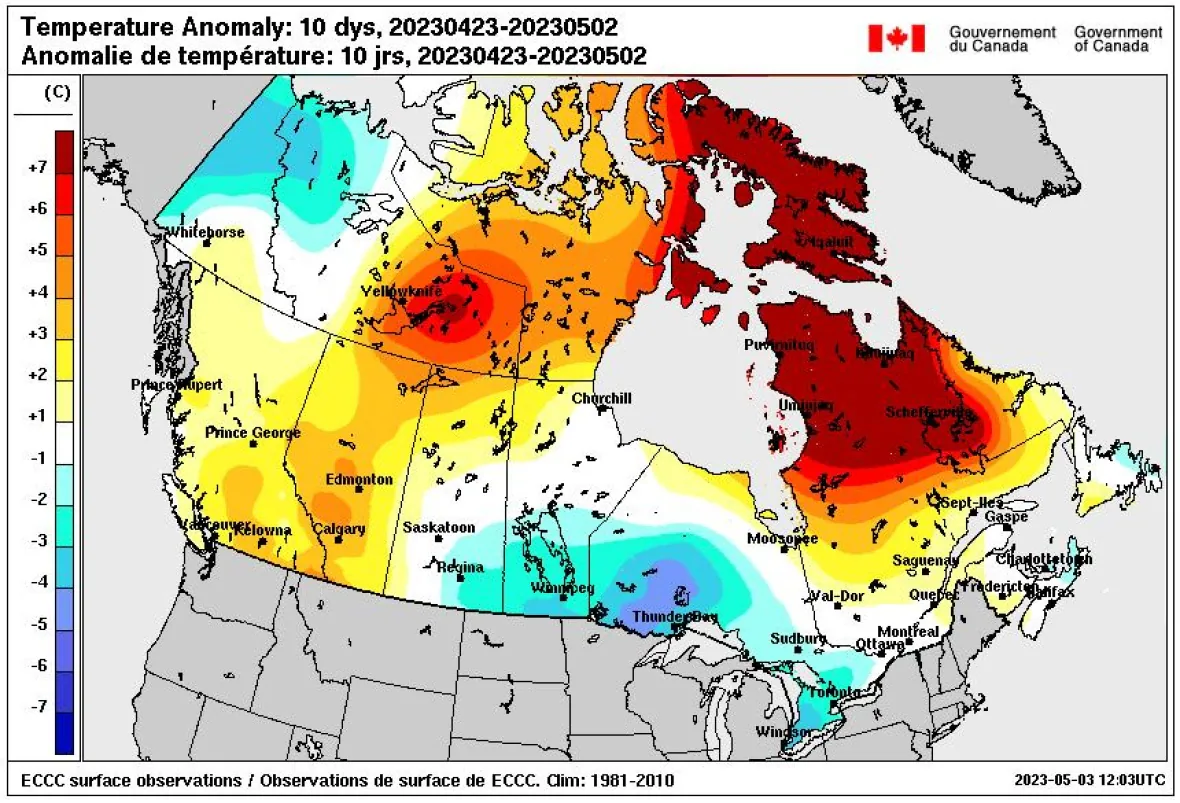Across the vast expanse of Canada, residents from one coast to the other are grappling with the detrimental effects of wildfires on their air quality.
According to the latest update from the Canadian Interagency Forest Fire Centre (CIFFC), a staggering 494 fires remain active as of Tuesday, unleashing their destructive force upon the country. The majority of these blazes are concentrated in British Columbia, Alberta, Ontario, and Quebec. Alarming figures reveal that a staggering 259 fires continue to rage uncontrollably, exacerbating the situation.
the ongoing 2023 wildfire season has earned the notorious distinction of being the most devastating in the history of Canada. The relentless flames have devoured an astonishing 7.7 million hectares of land, surpassing the previous record established in 1989.
in perspective, it’s worth noting that this area of destruction is nearly equivalent to the vast expanse of Lake Superior, which spans 8.2 million hectares. As Canada’s largest lake and the second largest globally, this comparison highlights the magnitude of devastation inflicted upon the affected regions.
“We haven’t seen a year with this much fire since 1989. That year, 7.3 million hectares were burned, which took place over the span of more than 12,000 fires,”
Said Marieke deRoos, communications officer with CIFFC
“This year, however, the amount of fire that has been burned has been over an area just shy of 3,000 fires.”
According to deRoos, the fires have expanded in size and intensity to a significant degree. As a result, the scale of destruction caused by these wildfires has escalated dramatically.
Since the onset of these fires in May, Canada has experienced a notable surge in air pollution. The consequences have been severe, with air quality indexes reaching alarming levels, at times surpassing those of any other country globally. This hazardous situation has placed vulnerable individuals at considerable risk, exacerbating their susceptibility to the detrimental effects of poor air quality.
“People are probably experiencing some low mood, trouble sleeping, maybe a bit of trouble concentrating,” Dr. Coutrney Howard, an emergency physician and vice chair of Global Climate and Health Alliance.
In BC, an unprecedented wildfire of monumental proportions continues its relentless advance, engulfing thousands of hectares each day.
Since its discovery on May 12, the Donnie Creek wildfire has persistently etched its name in the annals of British Columbia’s history as the largest fire ever recorded in the province. Its voracious flames have devoured an astounding 574,511 hectares, steadily expanding its reach.
In the province of Alberta, wildfires that ignited in late April continue to unleash their smoke, drifting eastward and concentrating heavily around Edmonton.
A smoke map reveals that this pollution is projected to gradually shift eastward and disperse by early Wednesday morning, providing a respite for certain Canadians from the pervasive wildfire smoke that has plagued them.
However, for communities situated in the Northwest Territories near Great Slave Lake, including Yellowknife, the smoke is anticipated to persist in the coming days before finally dissipating on Thursday morning. These areas will endure a prolonged exposure to the lingering smoke, prolonging the challenges posed by the wildfires.
With prevailing winds carrying the smoke eastward across Canada, the provinces of Saskatchewan and Manitoba are bracing themselves for the impending impact later this week.
As of Tuesday, Environment Canada has taken proactive measures by releasing a special air quality statement for the communities situated around Seabee Mine in Saskatchewan. In neighboring areas such as Flin Flon, Cranberry Portage, and Grass River Provincial Park in Manitoba, a similar scenario unfolds as these regions contend with the pervasive presence of smoke pollution, further exacerbating air quality concerns.



